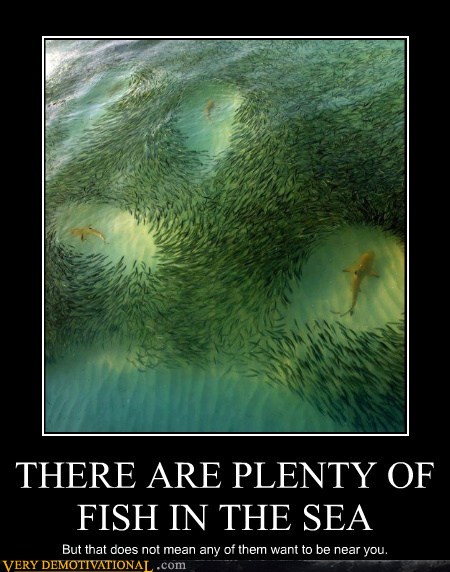Plenty Of Fish In The Sea
This is an Inside Science story.
One liter of ocean water can not only unlock the recent presence of dozens of species -- it can also reveal the relative number of these fish.
According to the most extensive comparison of its kind, the relative abundance of DNA from different species found from ocean water samples taken off the coast of New Jersey correlates well with the data gathered by the more expensive and destructive technique of bottom trawling.
While there are in fact a lot of fish in the sea, there may no longer actually be plenty of fish in the sea. In the first part of this investigation, you will watch several short videos and read a short article to introduce you to some of the ways that declining fish populations came to be, what fishing management and sustainable catches mean. I know we just told you recently that there are plenty of fish in the sea, but in reality, that adage may be on the verge of irrelevance. Just last month was the one-year anniversary of the BP oil spill in the Gulf of Mexico, a solemn reminder that there is much work to be done if we are to save our oceans from disappearing. Enter World Without Fish, a game-changing book for kids about what. For my dad he and i had a fishing contest got my but kicked.
'It's really going to be a game change for ocean science, with many applications,' said Mark Stoeckle, an environmental genetics researcher at Rockefeller University in New York City. He added that as DNA analysis becomes cheaper and more accurate, analyzing environmental DNA could be used for everything from tracking fluctuations in fish stocks due to fishing operations, to cataloguing the effects of climate change on species diversity and abundance.
© Giordano Cipriani/Getty Images, FILE In this undated file photo, a large group of yellowfin tuna is shown in the waters off Vibo Valentia, Calabria, Italy.Stoeckle's team analyzed multiple trawls conducted by the New Jersey Department of Environmental Protection to determine species diversity and abundance of fish. They also asked technicians to gather multiple 1-liter samples of water from the surface and from the bottom of the ocean where the trawls were conducted every month from January to November 2019.
Their environmental DNA analysis, published in the ICES Journal of Marine Science, revealed what fish species were present, and the number of copies of DNA from each species. The abundance of fish and the species diversity correlated with the results of trawl surveys about 70% of the time.

Plenty Of Fish In The Sea Login
They also looked at how these numbers changed over the seasons. This is important because researchers had thought that some DNA might hang around for longer in the environment and therefore mean that eDNA data could present a skewed snapshot of fish populations at a given time. But Stoeckle's team found that both eDNA and fish trawl surveys correlated pretty well over time as well.

Plenty Of Fish In The Sea Quote
MORE: This is how scientists potentially could turn discarded plastic into consumer goodsPrevious researchers had also worried that one big chunk of tissue from a single individual that passed through the area a while ago may overrepresent species presence. Similarly, a group of fish could have been through without leaving as much DNA.
Jason Adolf, a marine scientist at Monmouth University in New Jersey and a co-author of the study, said bottom trawls don't provide a perfect picture of fish populations as the net might go right by big schools without catching them. Environmental DNA isn't 100% accurate either, but it's cheaper to run than bottom trawls and DNA analysis is improving all the time.
'It's a whole new way of looking at what's in the ocean,' Stoeckle said. 'We're just beginning to make use of it.'
Inside Science is an editorially independent nonprofit print, electronic and video journalism news service owned and operated by the American Institute of Physics.

 Inside Science
Inside Science